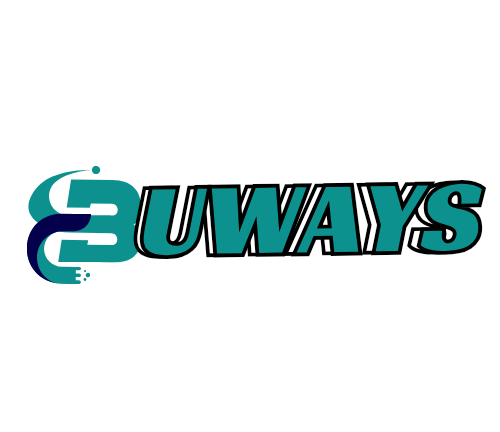In the digital age, blogging isn’t just a creative outlet; it’s a lucrative venture waiting to be tapped into. Imagine transforming your passion for writing into a steady stream of income while sharing your insights with the world. Unlocking profit potential through blogging may sound like a daunting task, but it’s entirely achievable with the right strategies in place. From identifying your niche and building an engaged audience to monetizing your content through various channels, this comprehensive guide will walk you through every step of the journey. Whether you’re a seasoned writer or just starting, you’ll discover actionable tips and proven methods to turn your blog into a profitable platform. Join us as we delve into the essentials of making money blogging, and get ready to redefine your income potential while doing what you love!
Choosing the Right Niche for Your Blog
Choosing the right niche is the cornerstone of a successful blog. It’s essential to select a niche that not only interests you but also has the potential to attract a substantial audience. Start by brainstorming topics you are passionate about and have expertise in. This could range from travel, fashion, and food to technology, finance, and wellness. The key is to find a balance between your interests and market demand. Conducting thorough market research can help you identify niches that have a high level of interest and relatively low competition.
Understanding your target audience is crucial when selecting a niche. Define who your ideal readers are, what problems they face, and how your blog can provide solutions. Use tools like Google Trends, Keyword Planner, and social media analytics to gauge the popularity and demand for your chosen topics. By narrowing down your focus to a specific niche, you can establish yourself as an authority in that area, making it easier to attract a loyal audience and monetize your content effectively.
Once you’ve identified a niche, it’s important to validate it. Start by creating a few blog posts and sharing them on social media and relevant forums to gauge the response. Pay attention to the engagement levels, comments, and feedback. This initial validation will give you an idea of whether your chosen niche has the potential to grow and sustain a profitable blog. Remember, the right niche is one that aligns with your interests, has an engaged audience, and offers opportunities for monetization.
Setting Up Your Blog: Essential Tools and Platforms
Setting up your blog is a critical step that lays the foundation for your blogging journey. The first decision you need to make is choosing a blogging platform. WordPress.org is a popular choice due to its flexibility, customization options, and extensive plugin library. It allows you to have complete control over your blog, making it ideal for long-term growth. Other platforms like Blogger, Wix, and Squarespace are user-friendly and can be suitable for beginners, but they offer less flexibility compared to WordPress.
Once you’ve chosen a platform, the next step is selecting a domain name and hosting provider. Your domain name should be easy to remember, relevant to your niche, and preferably include keywords related to your blog’s focus. Hosting providers like Bluehost, SiteGround, and HostGator offer reliable services and various plans to suit different budgets. A good hosting provider ensures your blog runs smoothly, with minimal downtime and fast loading speeds, which are crucial for retaining visitors and improving your search engine rankings.
After setting up your domain and hosting, it’s time to design your blog. Choose a clean, responsive theme that reflects your brand and is easy to navigate. Focus on creating an intuitive user experience by organizing your content into categories and using clear calls to action. Essential plugins like Yoast SEO, Google Analytics, and social sharing buttons can enhance your blog’s functionality and help you monitor its performance. Remember, a well-designed blog not only attracts visitors but also encourages them to stay longer and explore your content.
Creating High-Quality Content that Engages Readers
Creating high-quality content is the heart and soul of a successful blog. It’s what keeps readers coming back and encourages them to share your posts with others. To produce engaging content, start by understanding your audience’s needs and preferences. Conduct surveys, read comments, and analyze social media interactions to gather insights into what your readers are looking for. This will help you tailor your content to address their interests and provide value.
Quality content is not just about writing well; it’s also about presenting information in an engaging and accessible manner. Use a mix of formats such as how-to guides, listicles, interviews, and case studies to keep your blog fresh and interesting. Incorporate visuals like images, infographics, and videos to break up text and make your posts more appealing. Pay attention to your headlines, as they are the first thing readers see. Craft compelling headlines that arouse curiosity and promise a benefit, which can significantly increase your click-through rates.
Consistency is key when it comes to content creation. Develop a content calendar to plan your posts and ensure you publish regularly. This not only keeps your audience engaged but also signals to search engines that your blog is active, which can improve your SEO rankings. Additionally, focus on optimizing your content for search engines by incorporating relevant keywords, using meta descriptions, and ensuring your posts are easy to read. By consistently delivering high-quality content, you build trust with your audience and establish your blog as a credible source of information.
Building an Audience: Strategies for Growing Your Blog Traffic
Building an audience is a crucial aspect of turning your blog into a profitable venture. Without a steady stream of visitors, even the best content can go unnoticed. One of the most effective strategies for growing your blog traffic is search engine optimization (SEO). By optimizing your blog posts for relevant keywords, you can improve your search engine rankings and attract organic traffic. Focus on both on-page SEO elements, such as title tags, meta descriptions, and internal linking, and off-page SEO techniques like backlink building and guest posting.
Another powerful way to grow your blog traffic is through social media marketing. Share your blog posts on platforms like Facebook, Twitter, Instagram, and LinkedIn to reach a wider audience. Engage with your followers by responding to comments, participating in discussions, and sharing other relevant content. Use social media analytics to track your performance and identify which platforms and types of content resonate most with your audience. Paid social media advertising can also be an effective way to boost your visibility and attract new readers.
Email marketing is another essential tool for building an audience. By collecting email addresses from your visitors, you can create a mailing list and send regular newsletters to keep your readers informed and engaged. Offer incentives such as free e-books, exclusive content, or discounts to encourage visitors to subscribe. Personalize your emails to make your subscribers feel valued and include calls to action to drive traffic back to your blog. Over time, a well-maintained email list can become one of your most valuable assets for driving consistent traffic and generating revenue.
Monetization Methods: How to Make Money Blogging
Once you’ve established a steady flow of traffic to your blog, it’s time to explore various monetization methods. One of the most common ways to make money blogging is through display advertising. Programs like Google AdSense allow you to place ads on your blog and earn revenue based on clicks or impressions. While display ads can provide a passive income stream, it’s important to balance ad placement to avoid disrupting the user experience.
Affiliate marketing is another popular monetization method. By promoting products or services relevant to your niche, you can earn commissions on sales generated through your affiliate links. Choose affiliate programs that align with your content and provide value to your audience. Write detailed reviews, create comparison guides, and share personal experiences to make your affiliate promotions more authentic and persuasive. Transparency is key; always disclose your affiliate relationships to maintain trust with your readers.
Selling digital products is an excellent way to monetize your expertise. E-books, online courses, and printables are just a few examples of digital products that can generate significant income. Create high-quality products that address your audience’s pain points and offer actionable solutions. Use your blog to promote your products, provide previews, and share testimonials from satisfied customers. Additionally, consider offering one-on-one consulting or coaching services if your niche lends itself to personalized advice. By diversifying your income streams, you can maximize your blog’s profit potential and create a sustainable business.
Affiliate Marketing: A Deep Dive into Earning Commissions
Affiliate marketing is a powerful way to monetize your blog by promoting products or services and earning a commission on sales. To succeed in affiliate marketing, it’s important to choose the right affiliate programs that align with your niche and appeal to your audience. Research various affiliate networks like Amazon Associates, ShareASale, and Commission Junction to find programs that offer competitive commissions and reliable payouts. Look for products that you genuinely believe in and can confidently recommend to your readers.
Creating high-quality content that incorporates affiliate links is crucial for driving conversions. Write in-depth reviews, tutorials, and comparison posts to showcase the benefits of the products you’re promoting. Use compelling calls to action to encourage readers to click on your affiliate links. Transparency is essential in affiliate marketing; always disclose your affiliate relationships and be honest about the pros and cons of the products you promote. This builds trust with your audience and increases the likelihood of them making a purchase through your links.
Tracking and analyzing your affiliate marketing performance is key to optimizing your strategy. Use tools like Google Analytics and affiliate network dashboards to monitor clicks, conversions, and earnings. Identify which types of content and promotional methods are most effective and focus on replicating those successes. Experiment with different approaches, such as email marketing, social media promotion, and paid advertising, to find the best ways to drive traffic and increase your affiliate income. By continuously refining your strategy, you can maximize your earnings and make affiliate marketing a significant revenue stream for your blog.
Sponsored Posts and Collaborations: Working with Brands
Sponsored posts and collaborations with brands offer another lucrative avenue for monetizing your blog. Sponsored posts involve creating content that promotes a brand’s products or services in exchange for payment. To attract sponsorship opportunities, it’s important to build a strong online presence and establish yourself as an authority in your niche. Brands are more likely to work with bloggers who have a loyal and engaged audience.
When approaching brands for collaborations, it’s essential to present a professional pitch that highlights the value you can offer. Showcase your blog’s traffic, engagement metrics, and audience demographics to demonstrate your influence. Propose creative collaboration ideas that align with the brand’s goals and resonate with your readers. It’s important to maintain authenticity in sponsored posts by only promoting products that you genuinely believe in and that are relevant to your audience. Transparency is key; always disclose sponsored content to maintain trust with your readers.
Negotiating fair compensation is an important aspect of working with brands. Research industry standards and consider factors such as your blog’s traffic, engagement, and the scope of the collaboration when determining your rates. Don’t be afraid to negotiate for better terms or additional benefits, such as free products or long-term partnerships. Building strong relationships with brands can lead to ongoing collaboration opportunities and provide a steady stream of income for your blog. By delivering high-quality content that meets the brand’s objectives and engages your audience, you can establish yourself as a valuable partner and attract more sponsorship deals.
Leveraging Social Media to Boost Your Blogging Income
Leveraging social media is a powerful strategy to boost your blogging income. Social media platforms provide an excellent opportunity to reach a wider audience, increase your blog’s visibility, and drive traffic to your site. Start by identifying the platforms that are most popular with your target audience. Focus on building a strong presence on these platforms by sharing high-quality content, engaging with your followers, and participating in relevant discussions.
Consistency is key to building a loyal following on social media. Develop a content calendar to plan your posts and ensure you share content regularly. Use a mix of promotional posts, informative content, and personal updates to keep your audience engaged. Visual content, such as images, infographics, and videos, tends to perform well on social media, so incorporate these formats into your strategy. Utilize hashtags, tags, and keywords to increase the discoverability of your posts and reach a broader audience.
Monetizing your social media presence can be achieved through various methods. Sponsored posts, brand collaborations, and affiliate marketing can all be integrated into your social media strategy. Additionally, platforms like Instagram and YouTube offer features such as shoppable posts and ad revenue sharing that can generate income directly from your social media activities. Engage with your audience by responding to comments, hosting live sessions, and running contests or giveaways. By building a strong and engaged social media following, you can drive more traffic to your blog and create additional revenue streams.
Conclusion: Your Path to Blogging Success
Unlocking the profit potential of your blog requires a combination of passion, strategy, and persistence. By choosing the right niche, setting up your blog with essential tools and platforms, and creating high-quality content, you lay the foundation for a successful blogging journey. Building an audience through SEO, social media marketing, and email marketing is crucial for attracting visitors and growing your blog traffic.
Monetizing your blog involves exploring various methods such as display advertising, affiliate marketing, and selling digital products. Sponsored posts and brand collaborations offer additional revenue opportunities, while leveraging social media can further boost your blogging income. Each of these strategies requires careful planning, consistent effort, and a focus on providing value to your audience.
Blogging success doesn’t happen overnight, but with dedication and the right approach, you can turn your blog into a profitable platform. Continuously analyze your performance, experiment with new strategies, and adapt to changing trends to stay ahead in the competitive blogging landscape. Ultimately, the key to making money blogging is to stay true to your passion, build authentic connections with your audience, and consistently deliver high-quality content. Embrace the journey, and you’ll find that blogging can be a rewarding and lucrative endeavor.





